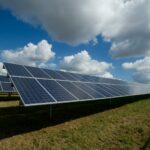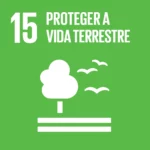
Alentejo will have the largest solar plant in Europe
The project will have to respect environmental requirements such as the planting of trees, the introduction of beehives and the ceding of the land for pasture.
We didn't find any happenings mapped to your criteria.
Try the traditional search to find articles not yet mapped with RUA.
We didn't find any happenings mapped to your criteria.
Try the traditional search to find articles not yet mapped with RUA.
We didn't find any happenings mapped to your criteria.
Try the traditional search to find articles not yet mapped with RUA.
We didn't find any happenings mapped to your criteria.
Try the traditional search to find articles not yet mapped with RUA.
And there is more! The hole in the ozone layer may even be fully closed in 43 years, in 2066.
The year begins with positive news. According to the report of the UN Montreal Protocol’s Scientific Assessment Panel, now released, if current policies continue, by 2066 the Antarctic ozone layer will have recovered to 1980 levels, while in the Arctic recovery will be faster, by 2045, and in the rest of the world it could occur by 2040.
In a statement, Meg Seki, executive secretary of the Ozone Secretariat of the United Nations Environment Programme, called the scientists’ findings “fantastic news.”
The scientists concluded that 99% of the banned substances were no longer used, allowing the ozonosphere to recover.
This is the case with chlorofluorocarbons (CFCs), commonly used in products such as air conditioners, refrigerators, and deodorants, but which, once released, damage ozone, allowing more harmful UV-B rays to pass through.
These changes occur due to the Montreal global protocol, signed in 1987, to safeguard the layer that protects planet Earth from ultraviolet rays.
According to the UN, the recovery of the ozone layer will prevent a 0.5ºC increase in the planet’s global temperature.


The project will have to respect environmental requirements such as the planting of trees, the introduction of beehives and the ceding of the land for pasture.

Since the beginning of the year, Portugal has had its first fully dedicated climate agency. The Climate Agency will be responsible for adapting the country

The Long Table restaurant in England serves meals based on food that would otherwise go to waste and on a pay-what-you-can system. Everyone has a

This article addresses an action that promotes the protection, restoration and sustainable use of terrestrial ecosystems, sustainably manage forests, combat desertification, droughts and floods, halt and reverse land degradation, and halt biodiversity loss.
 To discover businesses that are actively working to contribute to this Sustainable Development Goal, click here.
To discover businesses that are actively working to contribute to this Sustainable Development Goal, click here. To read news, interviews, or tips related to this Goal, click here.
To read news, interviews, or tips related to this Goal, click here. Want to know more about the 17 United Nations Sustainable Development Goals? Click here
Want to know more about the 17 United Nations Sustainable Development Goals? Click hereEsta publicação também está disponível em:
![]() Português (Portuguese (Portugal))
Português (Portuguese (Portugal))

